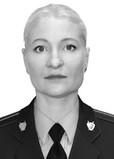Features of changes in students' body composition under aerobic exercises of various intensity
Фотографии:
ˑ:
PhD, Associate Professor N.V. Kazantseva1
PhD, Associate Professor O.I. Kuzmina2
Dr.Med., Professor V.Yu. Lebedinsky2
PhD, Associate Professor O.A. Shvachun3
V.S. Kazantsev1
1Irkutsk Law Institute (branch) of University of the Prosecutor’s Office of the Russian Federation, Irkutsk
2Irkutsk National Research Technical University, Irkutsk
3Central Branch of Russian State University of Justice, Voronezh
Objective of the study was to determine changes in the students' body composition occurring under the influence of aerobic exercises of different intensity by means of bioimpedance analysis.
Methods and structure of the study. A total of 168 students aged 18-21 years were involved in the study. The students were divided into the groups and involved into aerobics practices of varying intensity according to the Fox-Haskell formula: low-intensity group - within the range of 50-60% of HRmax (100-120 bpm); moderate-intensity group - within the range of 60-70% of HRmax (120-140 bpm); high-intensity group - within the range of 70-80% of HRmax (140-160 bpm). The training sessions were held twice a week for 90 mines.
The students' body composition was studied by the method of bioimpedance analysis using the body composition analyzer Tanita BC-730GR, reflecting the percentage of fat, muscular mass, water content in the body. The anthropometric measurements were taken to determine the level of physical development of the subjects.
Results and conclusions. The data obtained indicate the need to distribute students by gender, as boys and girls have different body composition indicators due to aerobic practices. In addition, the girls of the high-intensity group were found to have a significant increase in their muscle mass as compared to the girls trained in other intensity zones.
Further research suggests that the ovarian menstrual cycle affects the girls' body composition when they perform aerobic exercises of varying intensity.
Keywords: bioimpedance analysis, students' body composition, anthropometrics, functional tests.
References
- Dankovtsev O.A., Gulin A.V., Maksimenko V.B. Osobennosti fizicheskogo razvitiya, komponentnogo sostava tela podrostkov s normalnoy massoy tela i arterialnoy gipertenziey [Features of physical development, body composition of adolescents with normal body weight and arterial hypertension]. Vestnik Tambovskogo universiteta. Ser.: Estestvennye i tekhnicheskie nauki. 2001. v. 16 no. 2. pp. 535-540.
- Zyryanova E.A. Kompozitsionny sostav tela i sostoyanie reproduktivnoy sistemy sportsmenok razlichnykh vidov sporta [Body composition and state of reproductive system of athletes from various sports]. Abstract of PhD diss.. Moscow, 2008. p. 23.
- Shirko D.I., Lapitskiy D.V., Doroshevich V.I. et al. Gigienicheskaya otsenka adaptatsionnykh vozmozhnostey organizma u molodykh muzhchin s razlichnym sostavom tela [Hygienic assessment of body adaptive capabilities in young men with different body composition]. Voennaya meditsina. 2010. no. 2 (15). pp. 81-84.
- Chiu C.H., Ko M.C., Wu L.S. etal. Benefits of different intensity of aerobic exercise in modulating body composition among obese young adults: a pilot randomized controlled trial.Health Qual Life Outcomes, 2017, Vol. 15,issue 1, pp. 168. DOI: 10.1186/s12955-017-0743-4.
- International Journal of Obesity, 2007, Vol. 31, issue 12, pp. 1786-1797.DOI: 10,1038 / sj.ijo.0803683
- Irving B.A., Davis C.K., Brock D.W. et al. Effect of exercise training intensity on abdominal visceral fat and body composition. Med Sci Sports Exerc, 2008, Vol. 40, issue11, pp. 1863–1872. DOI: 10.1249/MSS.0b013e3181801d40
- Ohkawara K., Tanaka S., Miyachi M. et al. A dose-response relation between aerobic exercise and visceral fat reduction: systematic review of clinical trials.



 Журнал "THEORY AND PRACTICE
Журнал "THEORY AND PRACTICE